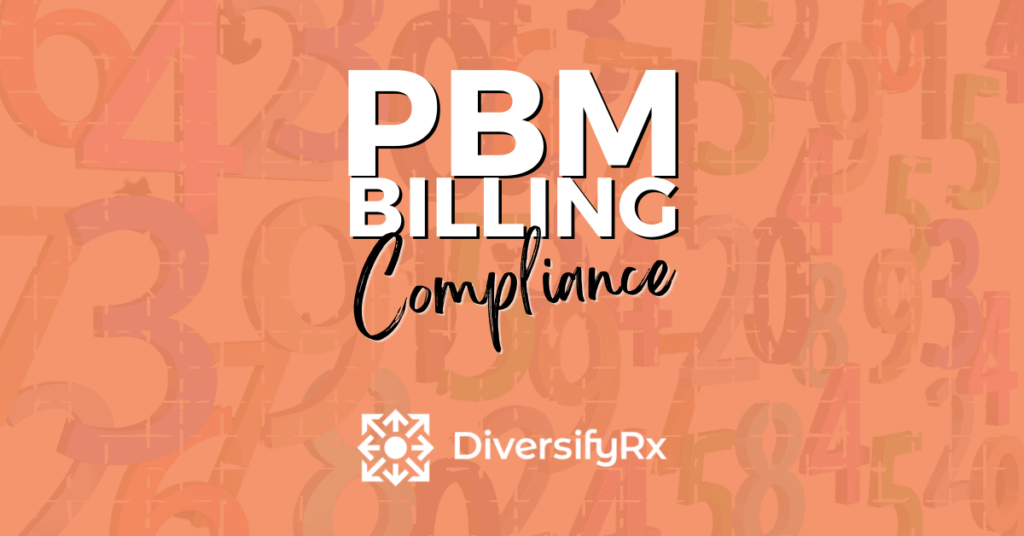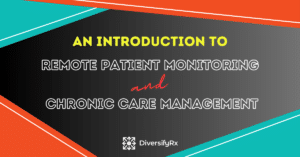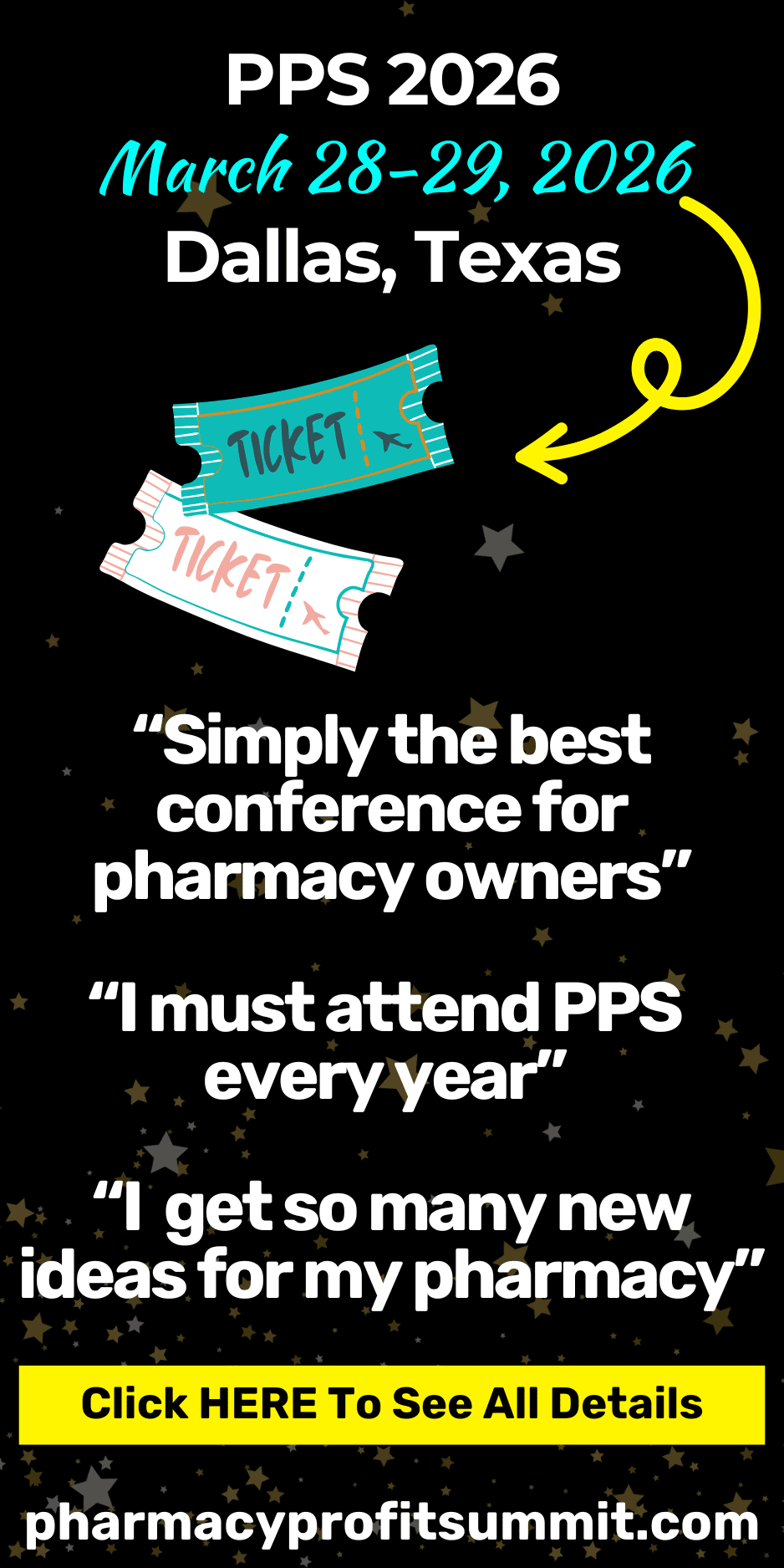When 90% or more of your revenues flow through a PBM, you need to be sure you have 100% PBM billing compliance.
Ensuring your PBM billing is compliant and following all the rules has become increasingly critical as audits continue to rise every year. PBMs frequently change their rules or change the interpretation of their rules, and you need to stay ahead. If you don’t, the consequences are dire. You could lose hundreds of thousands of dollars and lose the ability to contract with that plan for years or even indefinitely. Check out this very recent case involving a podiatrist and foot baths.
I am going to give you the essentials of PBM billing compliance. While this list is long, it certainly will not contain every possible nuance. Please reach out to DiversifyRx if you have any additional questions or suggestions. Let’s dive in.
Legal Rx
Ok, this may seem obvious, but it needs to be said. Make sure you are filling legal prescriptions. Got an Rx for Suboxone? Then you need an X-DEA number. Are you transferring a prescription from another pharmacy? Then you may need to document every previous fill, or you may not, depending on your state. First and foremost, the prescriptions need to meet all legal requirements in your state.
Test Claims
There really is no reason to do large volumes of test claims. That rare instance where you are requested to run a claim from the prescriber will always happen. However, rather than run test claims that will land you in hot water as violating PBM’s contracts, you can perform benefit checks. The problem with test claims is that you discover if a drug is covered AND learn the reimbursement. That amount can then influence a pharmacy’s behavior, which is why PBMs don’t like them. When you perform a benefit check, you get all the same information, EXCEPT the reimbursement amount. This way, you can work with the patient and prescriber to find a covered therapeutic option that will work for them.
My recommended method for benefit checks is through EZSCRIPTRx. Their platform is easy to use and provides many advantages over making a benefit claim through your PMS system. Benefit claim checks are entirely compliant with all PBMs, so you don’t need to worry about an audit from these. Bonus points if you use Real Value Products as a wholesaler, you get bonus credits with EZScriptRx.
Unapproved Other Products
One of the most common questions I get is about unapproved other products. Are they legal? Are they ok to dispense? There is not just a straightforward answer to these questions. While many legacy old drugs are classified as unapproved other by the FDA and are perfectly fine to dispense, there are many new ones that you should stay away from.
In particular, I loathe, detest, hate (ok, you get the picture) the packs that have infiltrated the market. These packs take low-cost products and pair them together with other Rx or OTC items. This new combo product has a new super high AWP, which results in extremely high reimbursements. While I love profit, I do not believe in profit over all else. In my personal opinion, these products are not legitimate (not in a legal way, just in the there is no way to justify the cost way), and a pharmacy should never dispense these. Many of these packs come from PureTek, but there are others. In summary, just because a product is legal to be on the market doesn’t mean you should be dispensing it.
Supplements & 510k Devices
There are many classifications the FDA uses. The unapproved other is mentioned above. Three more are most common in the pharmacy world: drug, supplement, and 510k device. A drug is what we typically think of when thinking of the word drug: amoxicillin, for example. A supplement is not a drug but instead is a recognized vitamin that is required to be Rx Only typically because it contains 1 mg of folic acid. 510k devices can be just about anything. When I first saw this designation, I thought of a device – such as a piece of equipment. However, that is not the case. 510k devices can be any dosage form or an external instrument.
Coupon Usage
The classifications above are essential to understand for PBM billing compliance. PBMs sometimes have different rules based on the dispensing product’s FDA classification. Most importantly, when using coupons on Caremark. Caremark welcomes all valid online coupons from the manufacturer for FDA-approved DRUGS only. You cannot use an online coupon to offset the copay for any supplement, unapproved other, or 510k device.
You must be able to show copay collection for all those excluded products in case of an audit. If you can’t prove you collected a copay, you will lose the full reimbursement amount PLUS risk losing your contract.
Aberrant List
Another Caremark uniqueness is their aberrant list. This list is a collection of specific NDCs that you cannot dispense more than 25% of your total Caremark billings in any given 30-day rolling period. The 25% is based on the total reimbursement amount during that period. If you receive $10,000 from Caremark, you can only bill $2,500 worth from the aberrant list. Their aberrant list is NOT a do-not-dispense list. It is a do-not-dispense too many list. Some products on their list help patients greatly. While there are also some products on that list I would never dispense. This ratio limitation is exclusive to Caremark. Prime Therapeutics also has a list that is a 10% list and includes a much larger set of products.
Cash Prices
According to your PBM contracts, you are required to send your usual and customary price (U&C) with each claim to the insurance. This rule is supposed to let the PBM see your ‘regular’ price and if it is lower than what they would normally pay you, then they are only obligated to pay you your U&C price. At first glance, this sounds logical. However, it infuriates me. This is comparing apples to cupcakes.
If I have a cash price for a drug, that transaction comes with no transmission fees, no clawbacks, no post-adjudication adjustments, and no risk of audits or takebacks. It is a much lower-risk transaction. When a PBM pays you the same rate as your cash price, they think it is the same thing, but it is not. You now have to pay transmission fees, possible DIRs, you are now exposed to audits for that claim and any other adjustments they want to make. They are not the same! Ok, off my soapbox.
To navigate cash prices and billing optimization, I recommend a few tips to remain compliant.
- Have discounted cash prices for uncommon quantities. Offer steep discounts for 100 count for example.
- Have specific NDCs for cash pricing and others for insurance billing. You are allowed to charge different prices for different NDCs.
- Use a smart in-house discount card such as AxeRx to help manage your discount pricing separate from your U&C.
Faxes
It is amusing that pharmacies still fax. I think healthcare is the only field that still uses fax machines. It is a common method of communication between pharmacists and prescribers. If you would like to request a prescription for a patient, it is still likely this will happen through fax. When you recommend a product (particularly a high-cost product) to a prescriber, you will want to separate the clinical justification from the prescription recommendation.
Here’s how this might look:
- 1st page is clinical notes from your visit with Mrs. Smith on how she isn’t compliant with her metformin because of diarrhea.
- 2nd page is the specific Rx recommendation you are making for Mrs. Smith: Metformin Osmotic 1,000mg 2 QD.
- When you get the prescription back from the prescriber, just keep the Rx part as a part of the prescription. I would recommend you add the clinical note part to the patient’s file for record-keeping.
- This communication becomes much cleaner if you have a PMS system that allows for clinical notes and electronic 2-way communication with a doctor’s office.
You want to separate these because some PBMs are identifying these recommendation activities as a solicitation of prescriptions. I can’t entirely agree with their perspective (shocking, I know!). If a pharmacy meets with a patient, discovers a gap, and then recommends a better therapy – that’s practicing pharmacy. However, if a pharmacy fax blasts for every patient on regular metformin to change to osmotic formulation, that is soliciting.
Pre-Printed Rx Pads
Many pharmacies and prescribers love pre-printed Rx pads. However, they can throw a wrench into your PBM billing compliance. In some states, pre-printed pads are fully legal. In others, there are limitations, such as the fact that no logo is allowed. And yet, in a few states, they are illegal altogether. This ambiguity doesn’t mean you can’t use them. It just may mean that they can’t be your legal prescription.
A pre-printed Rx pad could be an easy solution if a doctor in your area wants resources to help them prescribe better. Once the doctor knows what they want to prescribe, they may turn it into an e-script. Or once you receive the prescription, you can verbally call the doctor and make it a verbal prescription. There is always a way to provide a solution for the prescriber that will make getting the proper care to the patient easier while also staying in compliance with your PBM billing.
You can easily create these yourself in Excel or Canva and then print them locally. If you want some templates, just let me know. I can send them to you.
Invoices
One of the most common audit types right now is invoice audits. In this type of audit, a PBM will tell you they need to see all invoices for a set time period to ensure you are using valid wholesalers. In the case of Optum, you need to use an NABP-accredited wholesaler. Also, you need to purchase all test strips from an authorized distributor. Many places that sell test strips are not authorized, and you will lose all those prescriptions in an audit.
You need to keep a running list of all the places you buy products from. While you won’t be submitting the invoices, PBMs only accept them directly from the wholesaler. You will need to forward the audit to those wholesalers. If you forget some and are short on inventory later, it can be troublesome to add them at that time. So make sure you know your wholesalers and always request records from all of them for invoice audits. These audits are also a great reason to ensure you do a physical inventory count at least once a year and, preferably, twice a year.
Don’t Go Overboard
Even though it is perfectly legal and expected that you should optimize all your patients’ therapies to get them on the lowest out-of-pocket cost while increasing their therapeutic outcomes, you need to be aware of your global impact. Not every patient needs the higher-cost therapy, but certainly, some patients do. Make sure you are diversifying. Have many prescribers that refer to you. Have a good mix of payers. Recommend a variety of products to improve your patients’ health. Don’t put all your eggs into a single basket.
You Got An Audit
What do you do when you get an audit? It used to be pretty straightforward. Nowadays, when cases are being turned over to the FBI, HHS, and DOJ, that just isn’t true anymore. What starts as a seemingly simple audit may quickly turn into something much larger and much scarier. The gold standard in our industry is PAAS. While they give out great prevention tips and heads-up notifications, I would not rely on them for an active audit. My go-to for an active audit is Pharmacy Compliance and Consulting or Hunter Jamerson. If you need help with an audit, feel free to reach out to me, and I can give you a recommendation to fit your needs.
Audit Yourself
Nobody loves making a profit more than me. There are right ways to do it and wrong ways. Ensure you stay on the right side by keeping your PBM billing fully compliant. You can start by auditing yourself. Use this article as a starting point and look at your PBM billing practices. Where can you get better? What are you unsure about? I believe in maximizing profits while staying within the rules of the game. You can bill higher profit items and still sleep well at night knowing you are compliant.
If you have any questions or need support, you can reach me at in**@*********rx.com or my private Facebook group HERE.


















